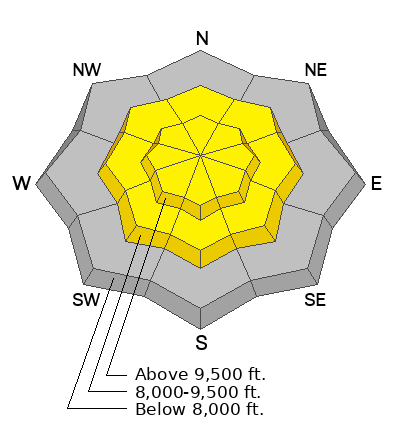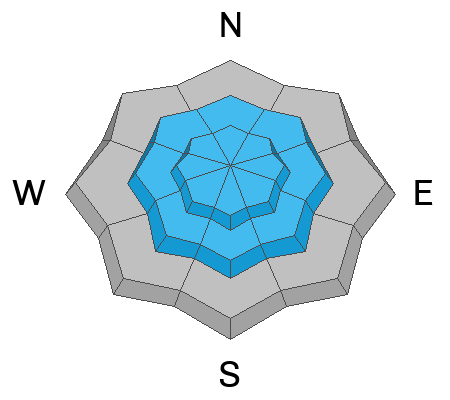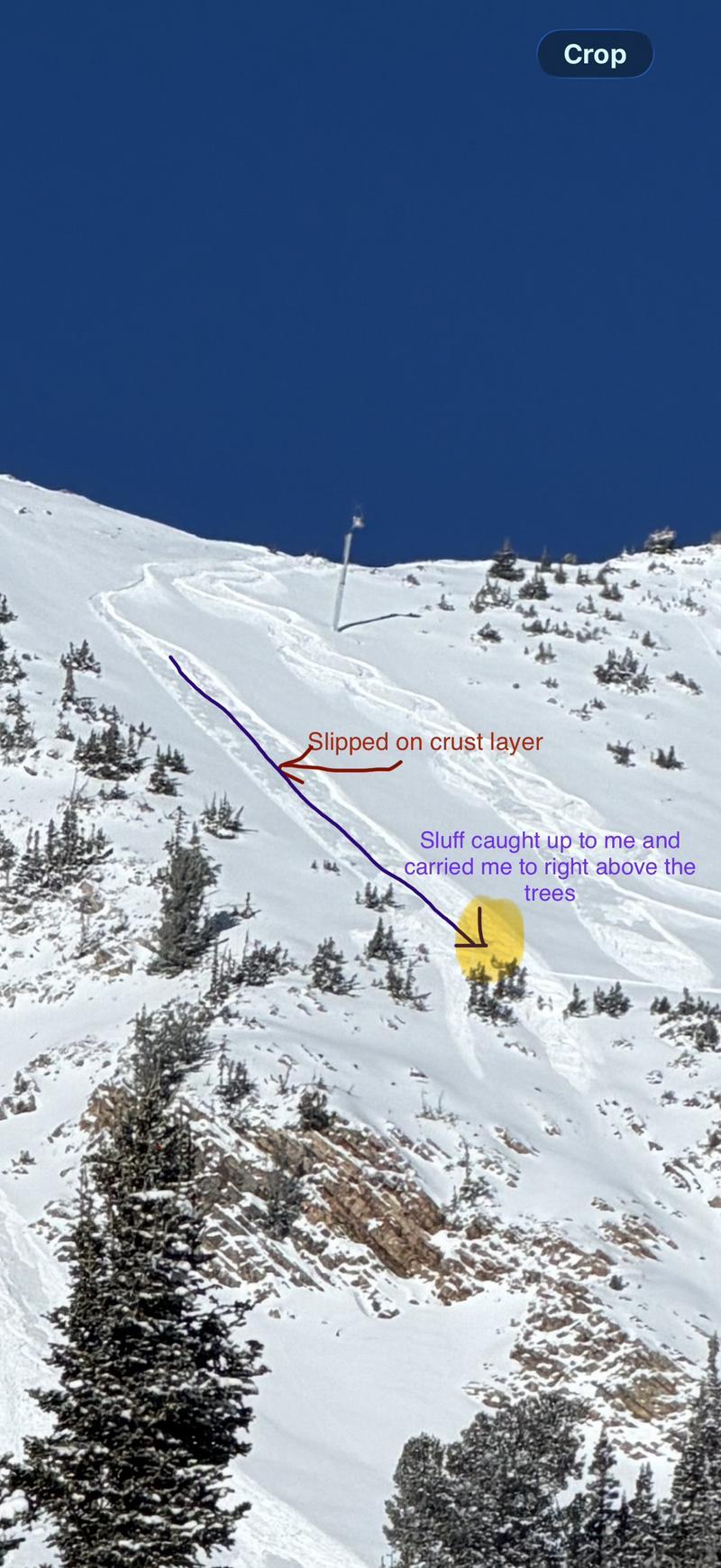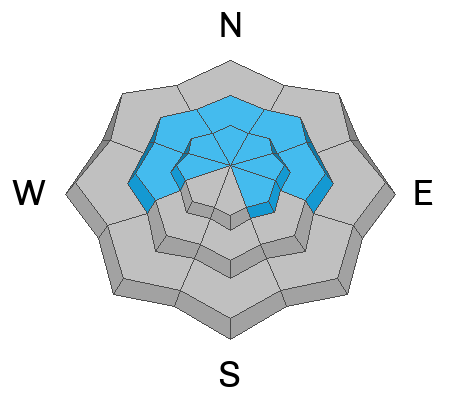This Morning: Skies are clear and temperatures range from 10°-20° F. Winds are from the north/northwest and light, less than 10 mph.
Today: Sunny with temperatures rising into the low and mid twenties °F. Winds will remain light, with occasional gusts around 20 mph.
The Saturday storm has settled to 4-6 inches of cold, dry snow on top of a stout rain crust that formed on Christmas Day. Slopes that are wind-loaded have up to 12 inches of snow above the crust.
Looking ahead, weather models are currently showing an active storm pattern beginning around the New Year.
We received no observations from the Provo mountains on Sunday, but to our north in the Salt Lake mountains, four human-triggered avalanches were reported to the UAC from Sunday, three involving the riders being caught and carried:
Toledo Bowl and Toledo Chute - Southeast aspect at 10,200 feet. Each were about 8 inches deep and ran a 1000 vertical feet.
Little Superior - Southeast aspect at 10,400 feet, 6 inches deep and 200 feet wide.
The avalanches mentioned above involved wind-drifted new snow running on the Christmas Rain Crust.
Sunset Peak - North aspect at 10,300 feet that ran on the persistent weak layer (PWL). This was 2.5 feet deep and 80 feet wide, with debris running to the apron below. Fortunately, the rider was not caught and carried, but they triggered another avalanche on a second piece of the slope as they avoid the initial avalanche. Photo below.
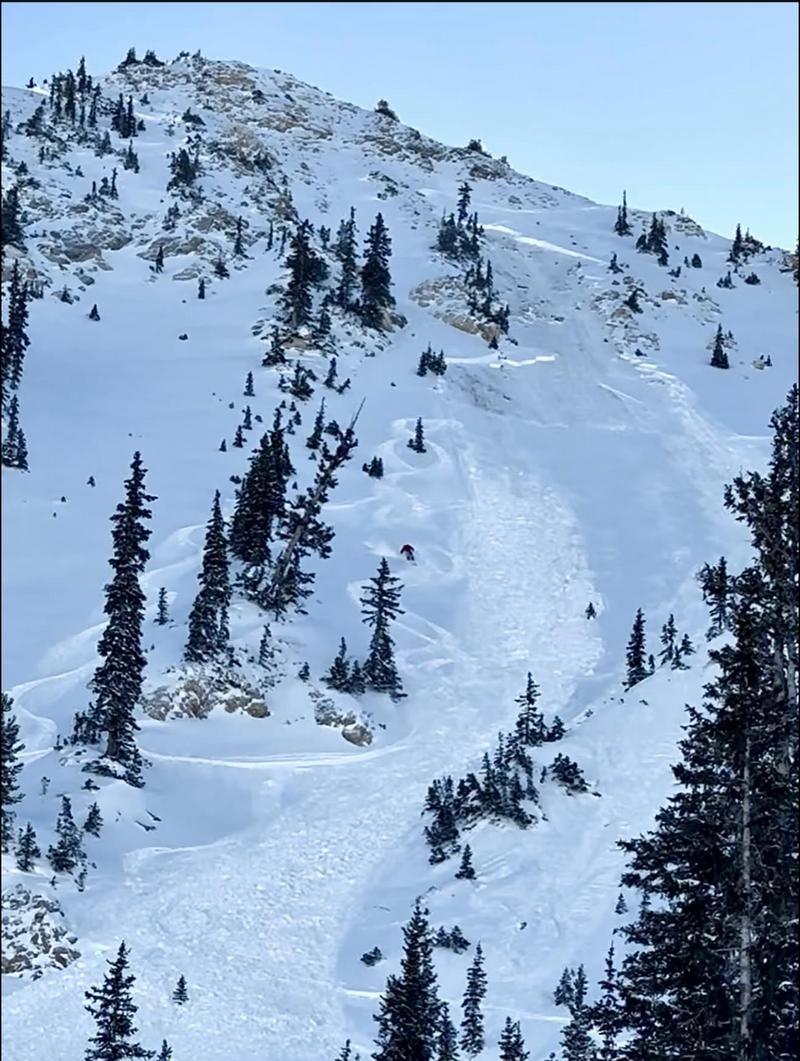
Human-triggered avalanche on Sunset Peak failing on the Persistent Weak Layer.

